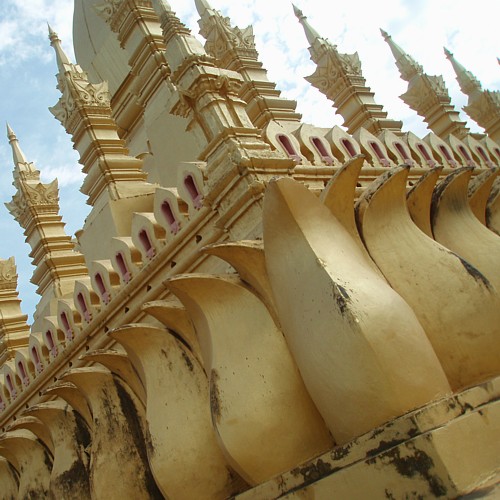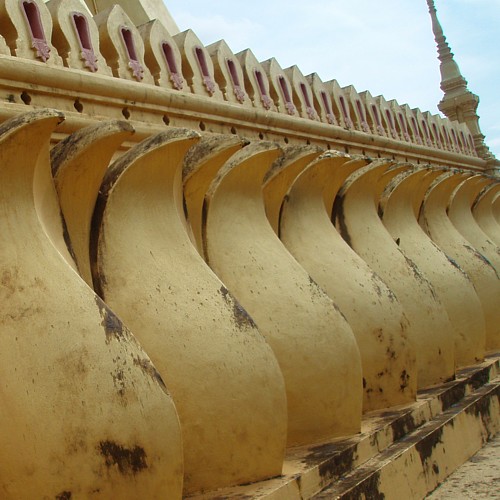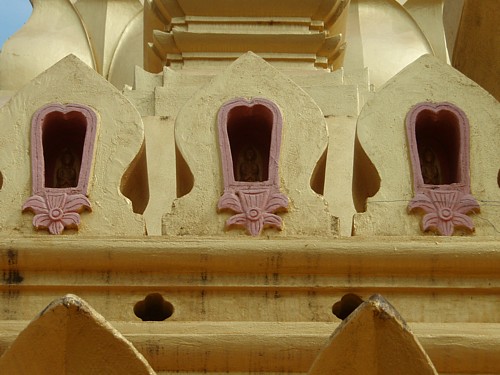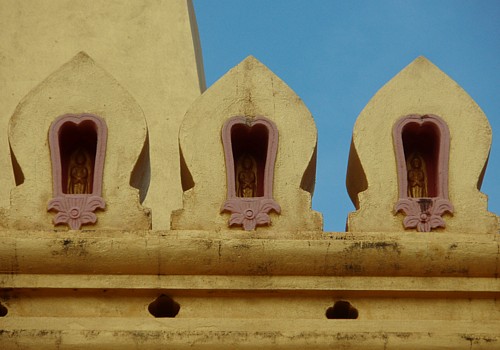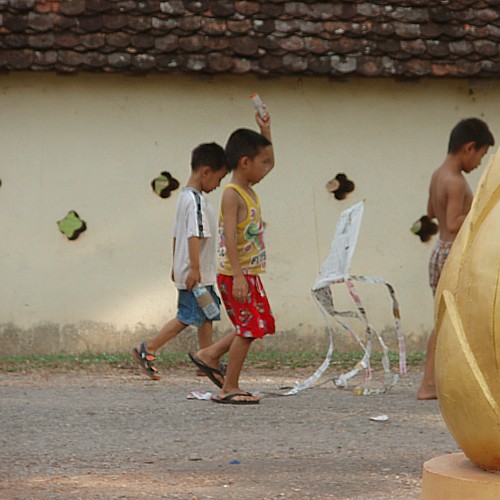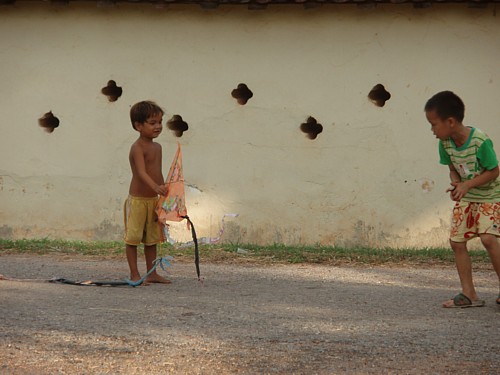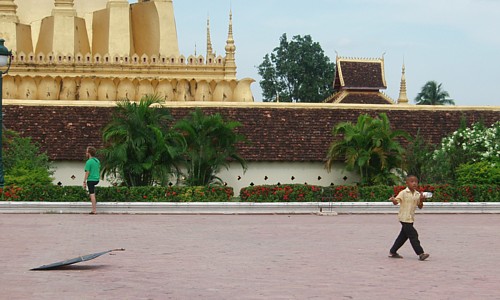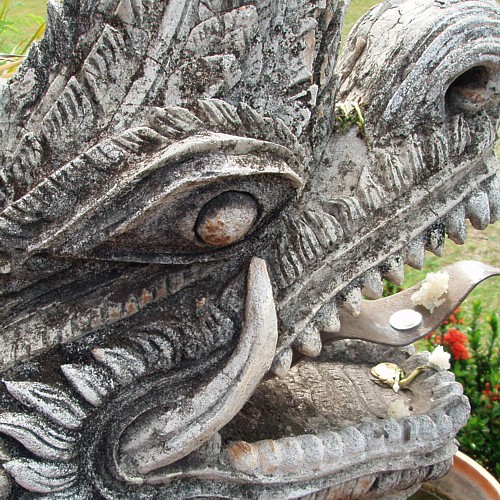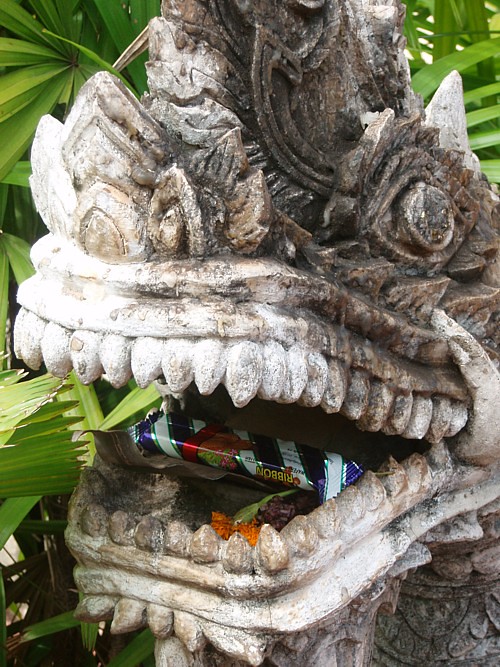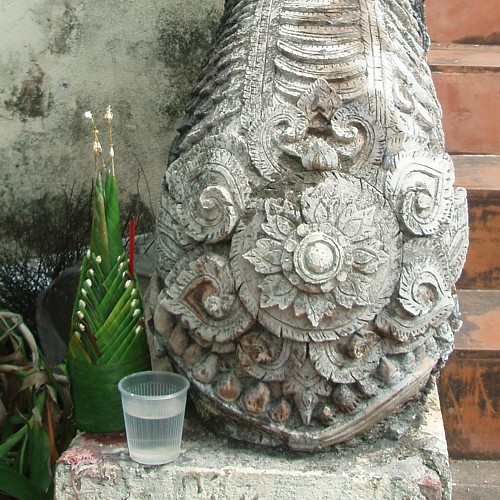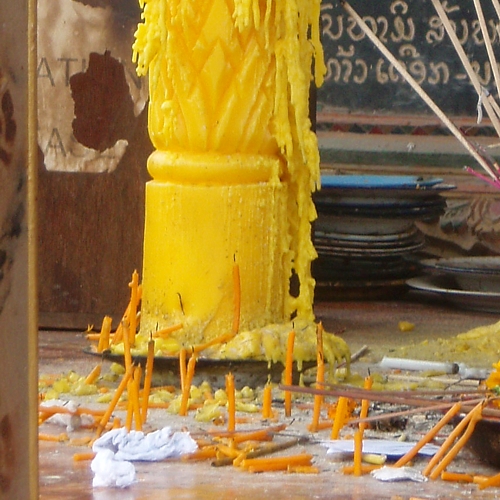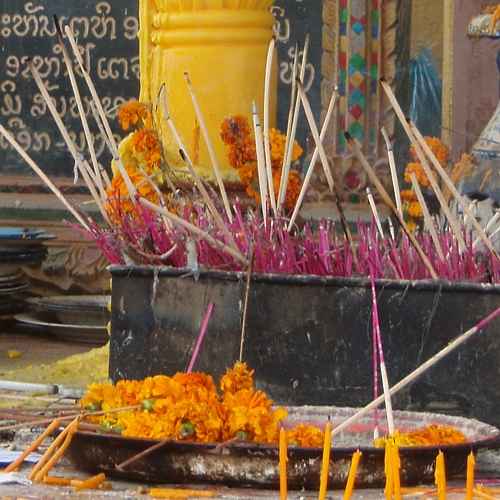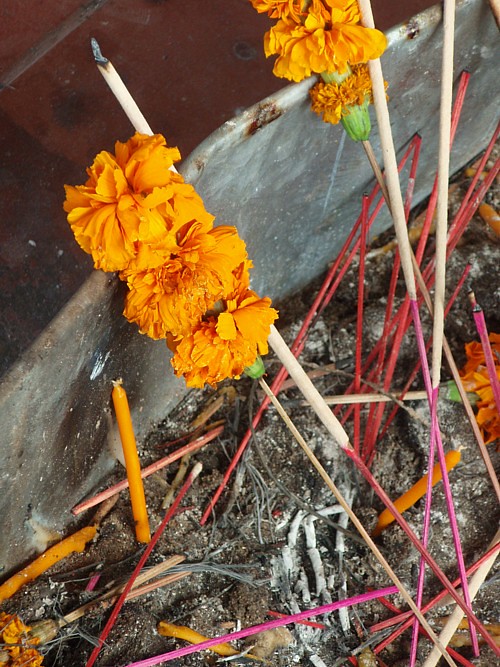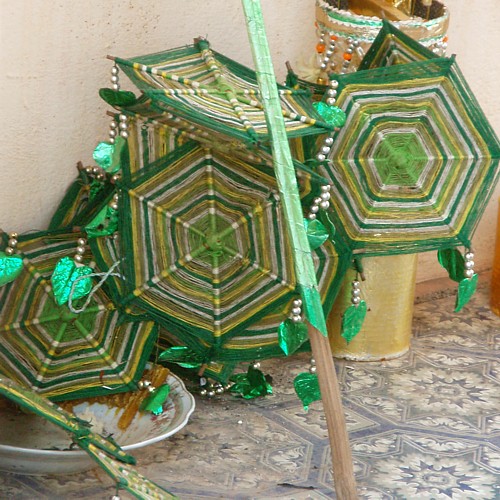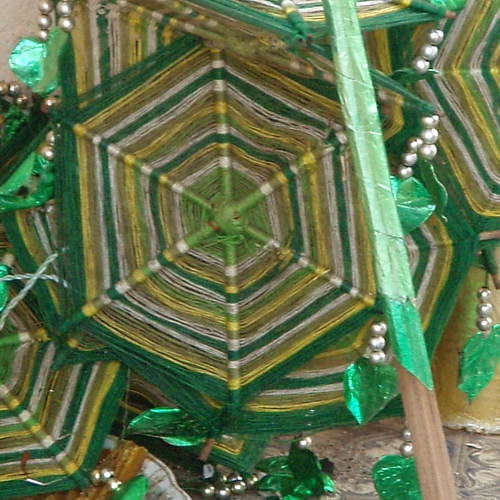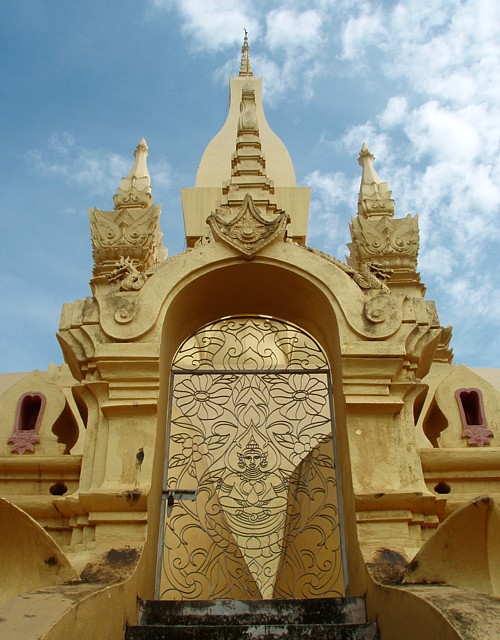
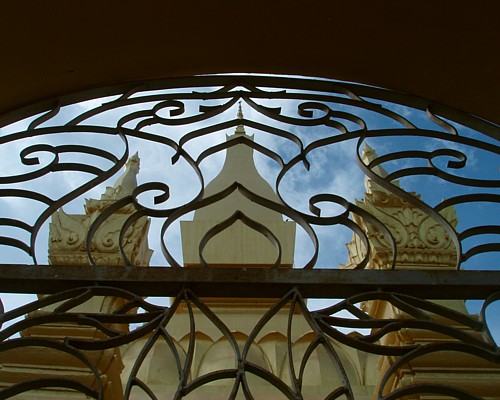

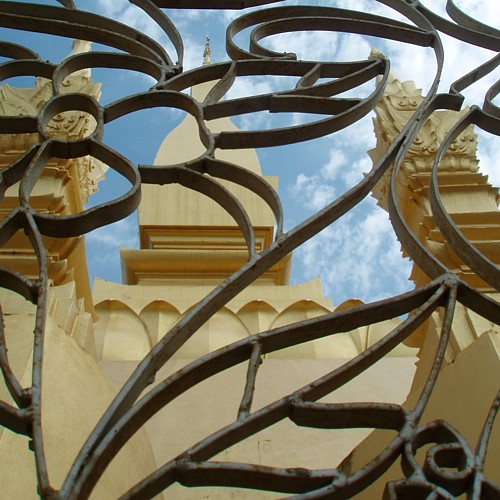
There are 30 of these 'spires' surrounding the actual stupa:
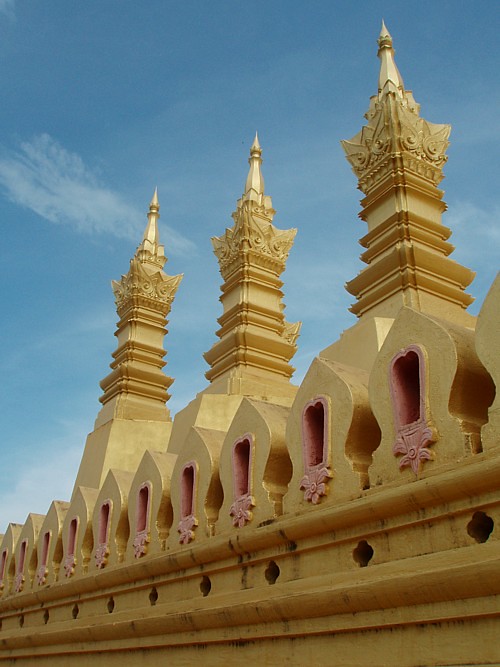
Each one represents a
parami (
บารมี barami - Thai, 波罗蜜 bo1 luo2 mi4 - Chinese), the perfection of a virtue that is part of the path to enlightenment:
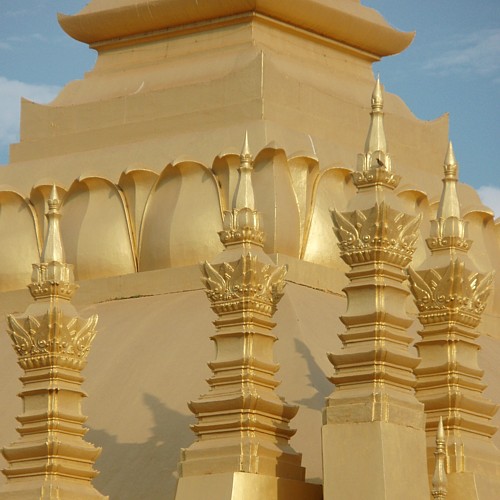
10 parami -
dana (ทาน taan 布施, generosity - from which the practice of giving alms stems),
sila (
ศีล siin 持戒
, virtue - observing the precepts),
nekkhamma (เนกขัมมะ renunciation),
panna (
ปัญญา panya 智慧
, wisdom),
viriya (วิริยะ
wiriya 精進, persistence),
khanti (ขันติ 忍辱 patience/tolerance),
sacca (สัจจะ satja 真实, truth),
adhitthana (
อธิษฐาน 決意 determination),
metta (
เมตตา 慈 loving kindness) &
upekkha (อุเบกขา ubekkha
和捨, equanimity) - each practised at 3 levels (parami, upaparami & paramattha parami) gives a total of 30 parami. The 30 parami (
timsa parami) are sometimes included in the chanting sessions at Theravada temples.
There are
jatakas (stories of the past lives of the Buddha) that describe each of the 10 parami, & the marathon recitation of the
Vessantara jataka (Maha Wetsandon chadok, about the generosity of Prince Vessantara) is the focus of the
Boun Pha Wet festival in Laos & Isaan. The Pali words for the various parami feature in the 'ordained'/Pali names of many Theravada monks & nuns, & likewise some of the Chinese words in the ordained names of Chinese Mahayana monks & nuns. For laypeople, the Chinese words for the parami of panna & metta also appear as part of some Chinese first names, while a few of the Lao/Thai terms for the parami are popular in both first & family names - in particular 'khanti' for Lao people (e.g. Khantisouk), which is pretty apt given the amount of waiting that is involved in getting things done in Laos :P
Useless trivia -
波罗蜜 the Chinese term for parami sounds exactly like & is written almost exactly like 菠萝蜜
the Chinese word for jackfruit :P & it so happens that Theravada monks of the
Thai forest tradition traditionally dyed their robes brown using the heartwood of jackfruit trees.
